Best all-time center fielders in MLB history

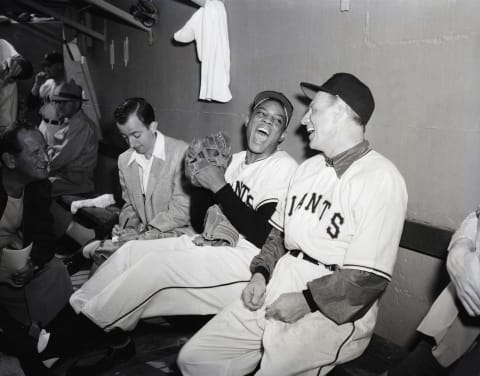
Continuing our series on MLB History, today we look at the top 20 center fielders in the history of baseball.
Our series with the top players at each position in MLB history continues today with the best all-time center fielders. Previously, we examined the top left-handed pitchers. We’ve also revealed the top right-handed pitchers, catchers, first basemen, second basemen, third basemen, shortstops and left fielders in baseball history.
Some of the greatest hitters in the game have played center field, but in 2018 the position is more often manned by defense-oriented players. In today’s game, catchers are the weakest-hitting positions players. Center fielders slot in with second basemen and shortstops, then there’s a big gap to the better hitting positions of third base, left field, right field, first base and DH.
On this list of the top 20 center fielders in MLB history, every player who made the list was an above average hitter and most rated good defensively. The list includes two players with 600 or more home runs and two with 800 or more stolen bases. There’s a .366 career hitter and a .250 career hitter. One of these all-time great center fielders struck out more than once every five times up and another struck out only once every 20 times up.
Many of these center fielders are in the Hall of Fame, as you’d expect. There are also some names that may surprise you, players who look better statistically than you might remember. Only one active player made the list. Even a casual baseball fan should know who he is.
For this list, two versions of Wins Above Replacement (WAR) were used, those from Fangraphs and Baseball-Reference, along with Wins Above Average (WAA). Wins Above Average gives more credit to very good seasons. I believe it’s a good metric to use when looking at all-time greats. Jay Jaffe’s JAWS list was also part of the discussion.
In the end, 20 men made the cut and their careers span more than a century of baseball. Let’s look at the 20 best all-time center fielders in MLB history.
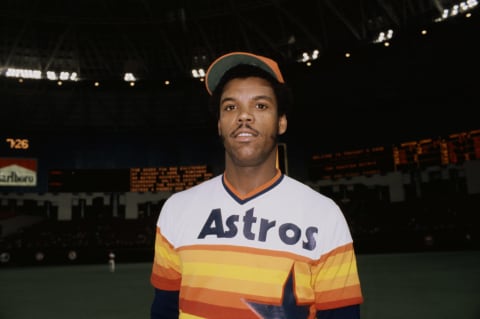
Best All-Time Center Fielders #20: Cesar Cedeno
“No matter what I do, they think I had a bad year.”—Cesar Cedeno
Cesar Cedeno was a great player in his 20s who had very little career value after turning 30. Had he finished his career the way he started, he would be one of the all-time greats. Despite his early fade, he still did enough early in his career to make the final spot on this top 20 list of the greatest center fielders in MLB history.
Through the age of 29, Cedeno was worth 46 Wins Above Replacement (WAR, per Fangraphs). That places him 12th all-time for center fielders before the age of 30. In those early years, Cedeno had seven seasons with 4 or more WAR, including four seasons with 5 or more WAR and two 7-plus WAR seasons.
For reference, here’s a handy guide that shows the caliber of player based on how they do in a season, with an example position player from 2017 for each category.
0-1 WAR—Scrub (Nick Markakis, 0.7 WAR)
1-2 WAR—Role Player (Jordy Mercer, 1.5 WAR)
2-3 WAR—Solid Starter (Ian Kinsler, 2.5 WAR)
3-4 WAR—Good Player (Alex Bregman, 3.5 WAR)
4-5 WAR—All-Star (Daniel Murphy, 4.5 WAR)
5-6 WAR—Superstar (Mookie Betts, 5.4 WAR)
6+ WAR—MVP (Joey Votto, 6.5 WAR)
Cedeno was at his very best in 1972 and 1973, when he was 21 and 22 years old. Across those two seasons, he hit .320/.380/.537 while averaging 94 runs, 24 homers, 76 RBI, and 56 steals per season. He could hit for average and power and steal bases with the best of them. He also won the first two of his five Gold Gloves.
At the time, Houston Astros manager Leo Durocher compared the young Cedeno to Willie Mays, saying, “… I’m not saying he will be better than Mays. No way anybody can be better than Mays. But I will say this kid has a chance to be as good.” There’s no higher praise for a young center fielder than to be compared favorably to Willie Mays.
An incident in the offseason following those two great years seemed to alter Cedeno’s career trajectory. He and his 19-year-old mistress were playing with a gun while drinking alcohol. The gun went off and the young woman was killed. Cedeno was initially charged with involuntary manslaughter before being released after 20 days in jail.
After that incident, Cedeno was never as good as he’d been in those first two glorious seasons. Of course, he’s not the only player in baseball history to start off like a meteoric comet only to fade out over the rest of his career. And it’s not like Cedeno went from great to terrible. He didn’t reach the 7 WAR level after that season, but he didn’t fall off the table either.
In fact, Cedeno continued to be a great player with the Astros through the rest of the 1970s despite increasing trouble with his knees as he grew older. He had a six-season run of 50 or more stolen bases early in his career while also hitting double-digits in home runs all six years. Here’s a video of him stealing home against the Cubs in 1977.
Injuries started to accumulate in 1978, a season in which he played just 50 games. He was limited to 132 and 137 games over the next two seasons, then finished out his career with the Astros by playing just 82 games in the strike-shortened 1981 season.
Cedeno joined the Reds in 1982 but wasn’t close to the player he’d been before. He spent three full years with the Reds, then a season split between Cincinnati and St. Louis, followed by one final year with the Dodgers. After being worth 46 WAR through the age of 29, Cedeno was worth just 3.8 WAR from the age of 30 on.
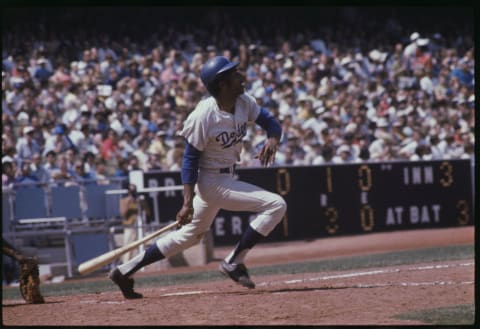
Best All-Time Center Fielders #19: Willie Davis
“He (Willie Davis) was so talented. God really blessed him with some great tools—for any sport, really—speed, strength, agility—everything an athlete needs in order to make the big time.”—Former Dodgers shortstop Maury Wills, on Willie Davis.
Willie Davis is the weakest-hitting center fielder on this top 20 list, but one of the best with the glove. He had the bad luck of playing much of his career during a decidedly bad era for hitters and in a park that favored pitchers. As an example, he hit .250/.284/.351 for the Los Angeles Dodgers in 1968. That looks like a terrible hitting line, but when league and ballpark effects were taken into account, he was actually close to average as a hitter (97 wRC+, 100 is average).
For his career, Davis was just slightly above average with the bat. He had his moments, though. Twice he led the NL in triples and he had a string of 11 straight seasons with 20 or more steals. He was a two-time all-star and three-time Gold Glove winner. He was part of two World Series-winning teams in Los Angeles in the 1960s.
Off the field, Davis enjoyed the Hollywood lifestyle. He was an actor, dancer and singer whose voice could be heard often on the program of Dodger announcer Vin Scully. He appeared in an episode of the TV show “Mr. Ed” after the Dodgers won the 1963 World Series. Six years later, he appeared in “The Flying Nun” with Sally Field. His biggest role was in the 1970 Jerry Lewis movie “Which Way to the Front?”
After 14 years with the Dodgers, Davis was traded to the Montreal Expoe for relief pitcher Mike Marshall in December of 1973. This began a nomadic period of Davis’ career. He would play for the Expos, Rangers, Cardinals, Padres and Angels over the last six years of his major league career. He also played one season in the Japan Central League, one in the Japan Pacific League and one in the Mexican League.
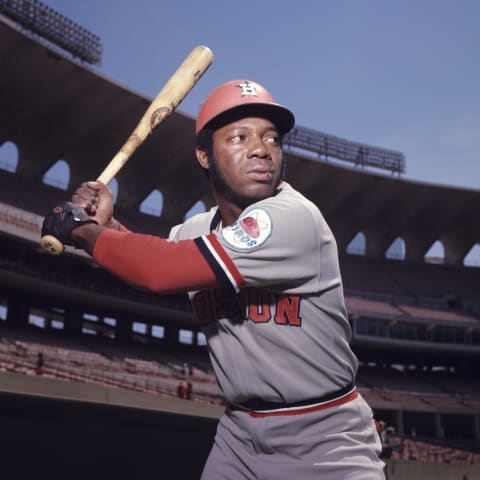
Best All-Time Center Fielders #18: Jimmy Wynn
“Anytime you get your number retired, it’s almost like getting into the Hall of Fame.”—Jimmy Wynn
It took a couple years until Jimmy Wynn established himself in the big leagues, but once he got going he was very impressive. His first great year came in 1965, when the 23-year-old hit .275/.371/.470, launched 22 homers, and stole 43 bases. Based on Fangraphs WAR, that was the 13th-best season ever by a 23-year-old center fielder.
Two years later, Wynn hit a career-high 37 homers and earned the nickname “The Toy Cannon” from Houston Chronicle sportswriter John Wilson. The name referenced Wynn’s small size (5-foot-10, 160 pounds) and powerful bat. Wynn didn’t like it at first, but he eventually came around and even used it as the title of his autobiography. He could hit some serious bombs, like this one at Crosley Field in 1967.
Wynn would have fit better in today’s game than he did in the 1960s and 1970s. Back then, batting average was king. Wynn’s career average of .250 was not impressive. Today he would be better appreciated for his .366 career on-base percentage—he walked more than 100 times in six different seasons—and his ability to hit for power, including eight seasons with 20 or more home runs.
Despite putting up eight seasons with at least 4.3 WAR (Fangraphs), Wynn only made the all-star team three times. Playing in Houston likely played a role because two of those all-star team selections came after he left Houston for Los Angeles. With the Dodgers in the 1974 postseason, Wynn had an ugly .192 batting average, but with a much more impressive .450 OBP and .423 slugging percentage.
Wynn’s production plummeted greatly at the end of his career. He had an above average 2.5 WAR season in 1976 with the Atlanta Braves, but was below replacement-level during stints with the Yankees and Brewers in 1977. Had he aged more gracefully, he could have approached the value of Hall of Famers Richie Ashburn and Andre Dawson. Instead, the quick end to his career resulted in a goose egg in his one year on the Hall of Fame ballot.
For more than 25 years from 1988 on, Wynn worked in community relations with the Astros. He spoke to kids about staying in school, working hard, and avoiding drug use. In 1992, he entered the Texas Baseball Hall of Fame. In 2005, the Astros retired his number 24. Seven years later, they opened up a baseball facility for urban youth and named it the Jimmy Wynn Training Center.

Best All-Time Center Fielders #17: Chet Lemon
“It was incredible. We were like rock stars.”—Chet Lemon, on the fan enthusiasm during the Detroit Tigers incredible 1984 season.
Chet Lemon was drafted by the Oakland A’s in the first round of the 1972 MLB Draft out of Fremont High School. There was some impressive baseball talent in Oakland in those days. Future big leaguers such as Bob Watson, Bobby Tolan, George Hendrick and Willie Crawford were from the area. Later, Rickey Henderson would star as a young player growing up in Oakland.
Lemon played shortstop and third base in the minor leagues, but was switched to the outfield after making 38 errors in 112 games in 1975. That was the same year he was traded from Oakland to the Chicago White Sox, the team for which he would make his major league debut in September.
The 1977 season was Lemon’s first great year. He scored a career-high 99 runs and combined above average offense with strong defense to be worth 5 WAR (Fangraphs). He followed that up with four more years with the White Sox during which he averaged 4.6 WAR per season.
These were the Bill Veeck years, when the eccentric owner ran promotions like “Disco Demolition Night” and had White Sox players wear shorts and a white top with a collar for the first time in a game on August 8, 1976. Lemon didn’t start that game but did get an at-bat late in the action.
After seven years in Chicago, Lemon was traded to the Detroit Tigers prior to the 1982 season. Two years later, he was part of the World Series-winning Tigers squad that began the year with 35 wins in their first 40 games. He also made the all-star team that year for the third time in his career.
Lemon continued to be a productive player with the Tigers through the rest of his career. The only below average season he had with Detroit was in 1989, but he bounced back with a 2.1-WAR season in 1990 before hanging up his spikes. He was on the Baseball Hall of Fame ballot in 1996, but received just one vote.
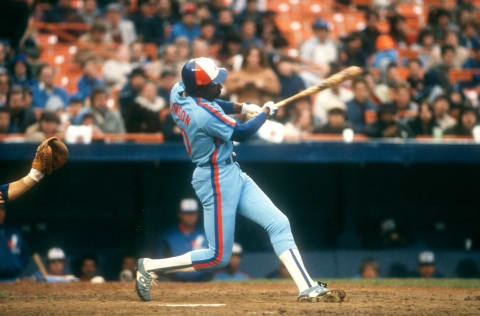
Best All-Tiem Center Fielders #16: Andre Dawson
“The inevitable did happen and they moved, but I think baseball will always live on here [Montreal]. You really hate to see the city lose its franchise because it’s going to be very tough to get it again. But to see the banner hanging and knowing that the fans will always remember, not the names, necessarily, but the support that was here and how it was successful for a long time.”—Andre Dawson
When the Montreal Expos drafted Andre Dawson in the 11th round of the 1975 MLB June Amateur Draft, they likely had no idea how good Dawson would be. There were 24 players drafted that round and Dawson was one of just three to get major league playing time. He appeared in 2627 games in his career. The other two players were Rick Leach (799 games) and Danny Garcia (12 games). Dawson was a true find.
After a 24-game sample in the big leagues in 1976, Dawson established himself with the Expos in his Rookie of the Year season in 1977. In his early years in Montreal, Dawson showed off his ability to hit for power and steal bases while being an asset in the field.
He had five seasons in which he hit at least 20 homers and stole at least 20 bases. He is also one of only five players in baseball history to hit at least 400 homers and steal at least 300 bases. The others are Barry Bonds, Willie Mays, Alex Rodriguez, and Carlos Beltran. That’s impressive company, to say the least.
Dawson was at his very best from 1980 to 1983, when he averaged 6.6 WAR per season and was a regular winner of the Gold Glove Award and the Silver Slugger. Twice during this four-year stretch he finished second in NL MVP voting. His average season during this period, with the 1981 strike year included, consisted of 94 runs scored, 24 homers, 87 RBI, 31 steals, and a .302/.350/.518 batting line in 140 games.
The 1984 and 1985 seasons weren’t as impressive for Dawson. He struggled a bit with injuries and didn’t hit for the power that was expected. He was particularly bad in 1985, when he hit just .255/.295/.444. Despite bouncing back in 1986, the Expos let him become a free agent following the season.
After playing his home games for more than a decade on the artificial surface of Olympic Stadium, Dawson was looking for a new home that would be easier on his knees. He took his talents to Chicago, where he reportedly offered the Cubs a blank contract. The team couldn’t turn down that offer and signed Dawson for $500,000.
Dawson’s 1987 season is the stuff of legends. He launched 49 home runs and had 137 RBI, both totals leading the NL. He was an all-star, Gold Glove winner, and Silver Slugger winner. Oh, and he won the NL MVP Award (which should have gone to Tony Gwynn or Eric Davis). Dawson’s new home, Wrigley Field, was very friendly to the slugger in 1987. He hit .332/.373/.668 at home and just .246/.288/.480 on the road. Here’s a clip of his 47th home run that year. The ball just explodes off his bat.
Dawson never again came close to hitting that many long balls or driving in that many runs, but he was a productive player for the next five years. Unfortunately, injuries really began to take their toll as he aged into his late 30s. He left the Cubs after the 1992 season and spent two years with the Red Sox and two more with the Marlins.
In retirement, he first appeared on the Baseball Hall of Fame ballot in 2002, getting 45.3 percent of the vote. His vote totals gradually increased over the next eight years and he finally crossed the threshold in 2010. That year, he was the only player to earn enough votes through the BBWAA, but six other players on that ballot would eventually make it to Cooperstown.
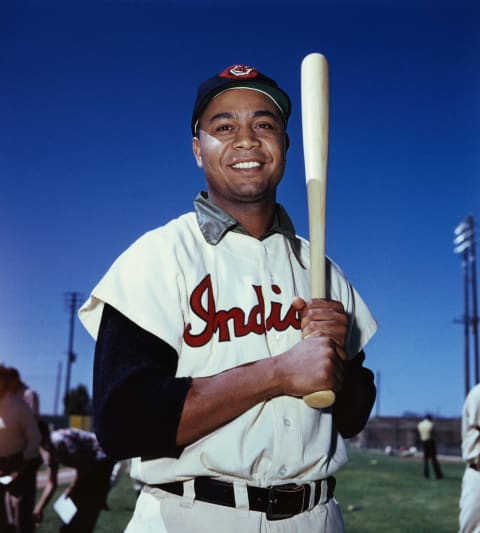
Best All-Time Center Fielders #15: Larry Doby
“It was 11 weeks between the time Jackie Robinson and I came into the majors. I can’t see how things were any different for me than they were for him.”—Larry Doby
When Jackie Robinson Day rolls around every year in Major League Baseball, it sometimes gets forgotten that Larry Doby made his big league debut with Cleveland less than three months after Robinson’s debut. Doby was the first African-American to play in the American League and, as such, faced the same abuse that Robinson faced.
When he first joined the team in the summer of 1947, Doby was not welcomed by his new teammates. They didn’t look at him or speak to him in the clubhouse. According to Bill White, Doby had to get a first baseman’s glove from the opposing team because none of his Cleveland teammates offered him one.
Robinson, of course, was an immediate starter with the Dodgers, so he had the opportunity to silence his critics with his play on the field. Doby spent most of his first season on the bench. He only had 33 plate appearances in 1947 and did not impress. He hit .156/.182/.188 that year.
Things were better for Doby and Cleveland in 1948. He bumped his rate stats up to .301/.384/.490 and scored 83 runs in 121 games. In the 1948 World Series, Doby became the first African American player to hit a World Series home run as Cleveland won the series in six games. That season solidified Doby’s spot in the Cleveland outfield, where he would be a perennial all-star for the next seven seasons.
In his prime, Doby twice led the league in home runs and twice finished in the top 10 in MVP voting. Along with 25-30 HR power, he also walked 90-plus times on a regular basis. Among the 20 center fielders on this list, Doby ranks ninth offensively, with a 137 wRC+.
After nine seasons in Cleveland, Doby was traded to the Chicago White Sox after the 1955 season. He spent two seasons with the White Sox, then came back to Cleveland before finishing out his career with the Tigers and White Sox (again) in 1959.
Doby has never received the recognition by casual fans that Jackie Robinson gets as a pioneer for African-American ballplayers, but passionate baseball fans know about Doby. The Indians inducted him into their franchise Hall of Fame in 1966. He’s also a member of the South Carolina Hall of Fame and the New Jersey Hall of Fame.
In 1998, the Veterans Committee selected Doby for the Baseball Hall of Fame. Nine years later, the Indians honored him by having every player where his number 14 on Larry Doby Day (August 10, 2007). In 2012, the field next to the team’s ballpark was renamed “Larry Doby Way.” More recently, on July 25, 2015, a statue of Larry Doby was dedicated at Progressive Field.
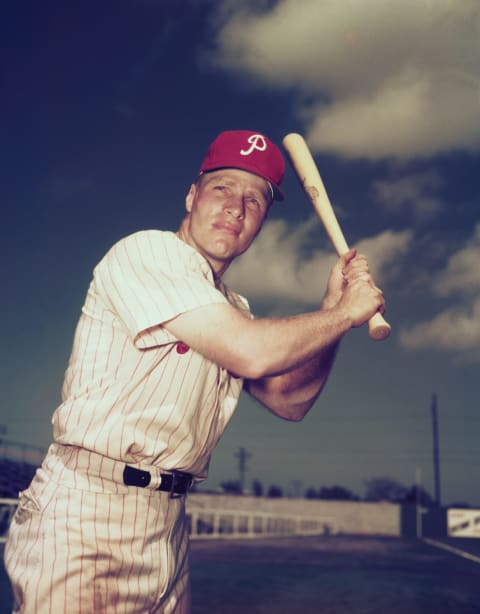
Best All-Time Center Fielders #14: Richie Ashburn
“I wish I’d known early what I had to learn late.”—Richie Ashburn
As a teenager, Richie Ashburn starred in American Legion games and was noticed by major league scouts. This was long before the MLD draft came into existence. At the time, he signed contracts with three different teams—the Indians, the Cubs, and the Phillies. The first two were voided by MLB Commissioner Kenesaw M. Landis and Ashburn became a Philadelphia Phillie farmhand.
After two minor league seasons and a year lost to military service, Ashburn debuted with the Phillies in 1948. He was an all-star and finished third in Rookie of the Year voting despite missing the last month of the season with a broken finger. Ashburn was known for his speed and showed it off by leading the league with 32 steals as a rookie, although he never again stole as many bases in a season.
Ashburn’s ability to run allowed him to lead the league in hits three times and in triples twice. He also had a good batting eye, as he led the league in walks four times and had a career on-base percentage of .396. Along with his speed, Ashburn was known for his defense in center field. He famously led all outfielders in putouts during the 1950s.
Unfortunately, the Phillies were generally not a successful team during Ashburn’s tenure. The one exception was the 1950 “Whiz Kid” Phillies who outplayed the Brooklyn Dodgers by two games to win the NL pennant. Ashburn was an important cog on this team, but he struggled in the World Series, hitting .176/.176/.235. The Phillies were swept by the New York Yankees.
Even as the Phillies fortunes fell, Ashburn continued to play well. He led the league in batting average twice and on-base percentage four times. In 1958, he led the league in both categories, hitting .350/.440/.441. That would prove to be his last great season in Philadelphia. He played one more year with the team before being traded to the Cubs prior to the 1960 season.
Ashburn was good in his first season in Chicago, leading the league in walks and on-base percentage, but struggled a bit in year two. He closed out his career as a member of one of the worst teams in modern baseball history, the 1962 New York Mets.
On those 1962 Mets, a team that was 40-120, Ashburn and Frank Thomas were the only players to be worth at least 2 WAR. Ashburn was named the team MVP, for which he was awarded a boat. Ashburn would later say it was dubious honor to be the MVP of such a bad team. He said he docked the boat in Ocean City, New Jersey, and it sank.
After his playing career ended, Ashburn joined the Phillies broadcast booth as an announcer, a position he held for 35 years. In 1995, he was inducted to the Baseball Hall of Fame through the Veterans Committee and was able to share the stage with BBWAA selectee and longtime Philadelphia Phillies player Mike Schmidt.
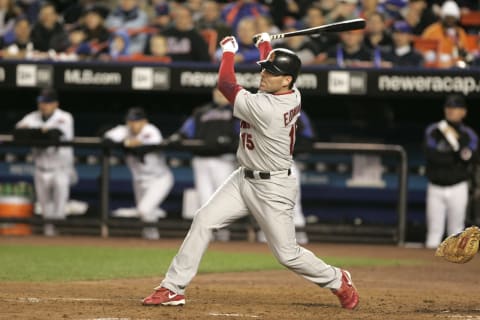
Best All-Time Center Fielders #13: Jim Edmonds
“I get paid a lot of money to play a game with the greatest players in the world. What could be better than that?”—Jim Edmonds
It’s a shame Jim Edmonds fell off of the Baseball Hall of Fame ballot after just one year. He received 2.5 percent of the vote in 2016 and will now have to wait to see if he gets more consideration through a future Veterans Committee. Statistically, he’s right in the middle of a group of centerfielders who had similar value. This group includes Richie Ashburn and Andre Dawson, both of whom are in the Hall, along with Willie Davis and Jim Edmonds, both of whom are not.
Edmonds was drafted out of Diamond Bar High School by the California Angels in the seventh round of the 1988 MLB June Amateur Draft. It took him five full seasons in the minor leagues and most of a sixth season before he saw action in the major league in 1993. Then it took another couple years until he established himself with a .290/.352/.536 season in 1995.
Once he got going, Edmonds never looked back. The main thing that limited him during his career was injuries. From 1995 to 2006, Edmonds hit .291/.385/.549, along with an average of 90 runs scored, 29 homers, and 86 RBI. He did this despite averaging just 132 games per season. Most years, he was a guy you could count on for on-base ability and power, with a good glove in center field. His career featured a highlight reel of great catches, with this superman dive in center field being a good example.
Edmonds had some good seasons in the seven years he played for the Angels, but was even better in the eight years he spent with the St. Louis Cardinals. During those eight years, he helped the Cardinals make the postseason six times, including two World Series appearances. Overall, he hit .274/.361/.513 in 64 postseason games.
After being traded from the Cardinals to the Padres following the 2007 season, Edmonds split the 2008 season between San Diego and Chicago, where he had a resurgent half-season and helped the Cubs make the playoffs. He then sat out the entire 2009 season, which he later admitted was a mistake.
Edmonds played one final season with Milwaukee and Cincinnati in 2010, hitting .276/.342/.504 in 86 games. He was still a productive player, but an Achilles tendon injury limited his playing time. He tried to come back with the Cardinals in 2011, but the injury proved to be too much and he officially retired on February 18. Three years later, he was inducted into the St. Louis Cardinals Hall of Fame.
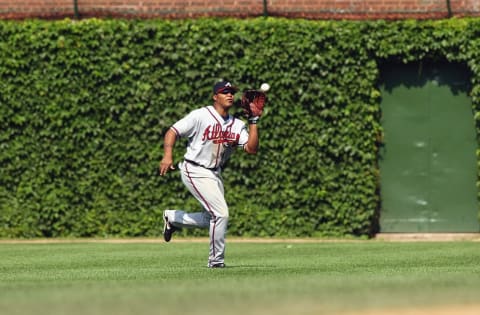
Best All-Time Center Fielders #12: Andruw Jones
“I love taking hits away from guys and seeing their reaction.”—Andruw Jones
How good was Andruw Jones as a young player? Consider this list of the all-time greatest center fielders through the age of 29 (sorted by Fangraphs WAR):
86.4 fWAR—Ty Cobb
85.1 fWAR—Mickey Mantle
70.1 fWAR—Tris Speaker
68.5 fWAR—Ken Griffey, Jr.
65.0 fWAR—Willie Mays
62.5 fWAR—Mike Trout (still only 26 years old)
61.0 fWAR—Andruw Jones
52.5 fWAR—Joe DiMaggio
50.7 fWAR—Duke Snider
There’s Andruw Jones, behind five Hall of Famers and Mike Trout. In his 20s, Jones had eight seasons worth 5 or more WAR, including three 7-plus WAR seasons. Those are MVP-caliber years. He was a five-time all-star who averaged 146 games, 87 runs, 31 homers, 93 RBI, and a .267/.345/.505 batting line during this peak. He also won nine of his 10 Gold Glove Awards before he turned 30 years old.
But then he turned 30 and hit .207/.304/.393 over the next three seasons. It was inexplicable that someone could drop off a cliff like Jones did. The first of these years was his final year with the Atlanta Braves, when he was still very good defensively. In the second and third years of this three-year stretch, even Jones’ glove betrayed him. Not only had his bat gone missing, his ability in center field eroded with age.
After playing a dozen years with the Braves, Jones finished his career by playing with four different teams over his final five big league seasons. He had one productive year with the Chicago White Sox in 2010 and wasn’t bad with the Yankees in 2011, but never came close to being the player he had been when he was young.
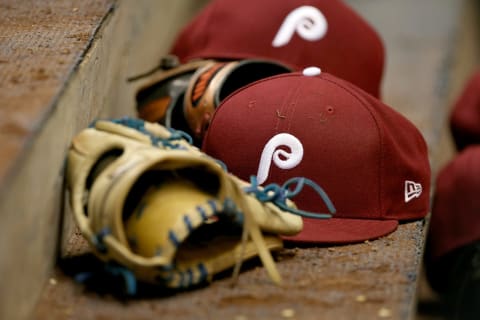
Best All-Time Center Fielders #11: Billy Hamilton
“I never saw a runner get a lead off first base like Billy.”—Jack Carney, on Billy Hamilton
This Billy Hamilton is not to be confused with the current Billy Hamilton who plays for the Cincinnati Reds. They have at least one big similarity, their speed. Both Billy Hamiltons were/are prodigious base-stealers. The big difference between them is that current Billy Hamilton has a career .299 OBP. The Billy Hamilton who ranks 11th all-time among center fielders had a .455 career OBP.
This speedy center fielder was known as “Sliding” Billy Hamilton. He played for three teams from 1888 to 1901. His main skills on the diamond included hitting for a high average, taking a good number of walks and stealing many bases. He led the league in batting average twice, on-base percentage five times and stolen bases five times.
Bill James wrote about Billy Hamilton in The New Historical Baseball Abstract (1999 ed.), saying, “Hamilton is completely invisible in the literature of the sport up to 1960 and was not elected to the Hall of Fame until 1961. He left no legend behind him, no stories, no anecdotes…”
The mysterious Hamilton was described in this SABR article as a short man with thick, muscular legs. “He learned to use his speed to beat out bunts, steal bases, and cover large amounts of ground in the outfield.” If not for his blazing speed, he likely would have spent his adult life as a textile worker.
Hamilton never saw an open base he didn’t want to steal. From 1889 to 1998, he averaged 82 stolen bases per season. Sam Thompson played with Hamilton early in his career and Ty Cobb later. He said Hamilton was “more daring and reckless” than Cobb.
Despite James assertion that Hamilton was “completely invisible” in the literature of the sport, there are some stories out there about the speedy player. He was known as one of the best at the fadeaway slide, a maneuver in which the runner slides past the base to avoid being tagged and hooks the bag with his toes.
In another story about Hamilton, it was said that he made an opposing third baseman so angry with his base stealing that the opponent picked Hamilton up and tossed him into the stands. That would light up social media if it were to happen today.
Hamilton’s 14-year career ended after the 1901 season. He had over 2000 career hits and drew more than 1000 walks. His 914 stolen bases (per Baseball-Reference) ranks him third all-time, behind only Rickey Henderson and Lou Brock. He was inducted into the Baseball Hall of Fame by the Veterans Committee in 1961 and is on the Philadelphia Baseball Wall of Fame.
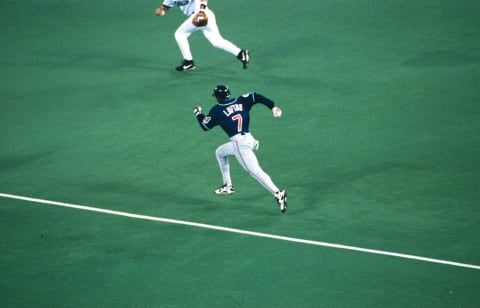
Best All-Time Center Fielders #10: Kenny Lofton
“Most of the teams who traded for me or signed me needed me to fill a hole in the puzzle. I feel good about that. You’ve got to roll with it, live your life day-by-day. Tomorrow’s not promised to anyone.”—Kenny Lofton
The most amazing comeback I’ve ever seen in a baseball game happened on August 5, 2001. The game was in Cleveland and the visiting Seattle Mariners took a 12-0 lead after three innings. This was the season the Mariners won 116-games. Everything clicked for them that year. About the only blemish on their record-setting season was this game.
Cleveland scored two in the fourth, but the Mariners answered with two in the top of the fifth to take a 14-2 lead. That’s where it was heading into the bottom of the seventh inning. Then the craziness began. Cleveland scored three in the seventh, four in the eighth, and five in the ninth to tie it. They won it on a Jolbert Cabrera RBI-single in the bottom of the eleventh.
The player who scored the winning run in this incredible comeback was Kenny Lofton. It was the final blow for Lofton in a game in which he had four hits, a walk, and three runs scored. Most of that damage came in the late innings when it seemed like he and Omar Vizquel were on base every five minutes. Not only did Lofton reach base five times in this game, Vizquel did the same. He had four hits, a walk, and four RBI. They were like mosquitoes in their relentlessness in the late innings. The Mariners just couldn’t swat them away that night.
Kenny Lofton was a much better player than you remember him being. Early in his career, he lead the league in steals five straight seasons while also getting on base at a healthy clip in front of the big boppers on the mid-1990s Cleveland Indians. He went to Atlanta for a year, then returned to Cleveland in the late 90s.
From 1992 to 2000, Lofton averaged 106 runs and 51 steals per season while hitting .308/.385/.431. He was a 5 WAR player who made the all-star team six straight years and won four straight Gold Gloves. Except for a 20-game sample with the Astros in 1991 and that one season with the Braves in 1997, Lofton spent these years in Cleveland.
It would be interesting to see how Lofton’s Hall of Fame prospects would have fared had he stayed with Cleveland over the final six years of his career. Instead, he played for the White Sox, Giants, Pirates, Cubs, Yankees, Phillies, Dodgers, Rangers and a final partial-season with Cleveland once again.
Because he moved around so much during this time, it’s easy to forget that he hit .293/.360/.418 and averaged 80 runs scored and 24 steals in 123 games per season during this stretch. He was still a productive player, averaging 2.5 WAR per year from the ages of 35 to 40. He just happened to move from team to team to team.
When Lofton appeared on the Hall of Fame ballot in 2013, he received just 3.2 percent of the vote. He deserved far more. Among center fielders, he ranks 13th all-time in Fangraphs WAR, 8th in Baseball-Reference WAR, 10th in Jay Jaffe’s JAWS metric and 9th in Wins Above Average.
Lofton didn’t hit as well as many of the players on this top-20 list, but only Andruw Jones and Willie Mays had more value with the glove. Any team would like to have a guy like Lofton, a player who could get on base, steal second, and score on a single while tracking down fly balls with the best of them.
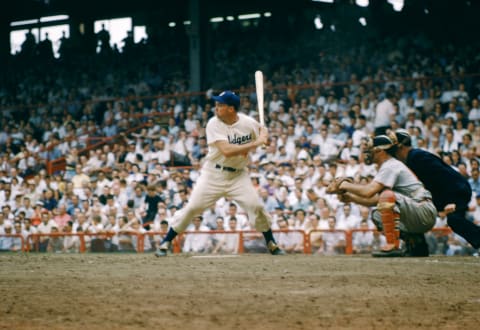
Best All-Time Center Fielders #9: Duke Snider
“The sport to which I owe so much has undergone profound changes, but it’s still baseball. Kids still imitate their heroes on the playgrounds. Fans still ruin expensive suits going after foul balls that cost five dollars. Hitting streaks still make the network news and hot dogs still taste better at the ballpark than at home.”–Duke Snider
As the centerfielder for the Brooklyn Dodgers during the 1950s, Duke Snider had the misfortune of playing in the same cities with two other all-time great center fielders. Willie Mays starred for the New York Giants and Mickey Mantle was the golden child for the New York Yankees while Snider patrolled center for the Dodgers. Despite earning selections to the all-star team seven straight years from 1950 to 1956, Snider was always the third guy mentioned, even in the song, “Willie, Mickey, and the Duke.”
Snider earned a contract with the Dodgers during a tryout camp in Long Beach, California, and played his first professional season as a 17-year-old in the low minor leagues. Three years later, he had his first taste of major league play with the Dodgers in 1947, the same year Jackie Robinson broke the modern color barrier.
Snider bounced between the major leagues and minor leagues for two years, then established himself with the Dodgers in 1949 with a five-win season. That was the beginning of a nine year stretch during which Snider averaged 148 games played, 107 runs, 35 homers, 109 RBI, and a .305/.387/.568 batting line. He was regularly a 5-win player and peaked with four straight seasons during which he averaged 8.4 WAR per season from 1953-1956.
The Dodgers were regular World Series participants during this time, but they almost always lost in the Fall Classic to the New York Yankees. They finally won it all in 1955, beating the New York Yankees in seven games. Snider hit .320/.370/.840, with four home runs and seven RBI.
After the 1957 season, the Dodgers took their talents to the west coast, landing in Los Angeles. Snider was 31 years old in 1958 and had his first bad season since becoming a regular. He had a couple of league average seasons over the next three years but was really never as good over his last seven seasons as he had been previously, although he helped the Dodgers win another World Series trophy in 1959. He played his penultimate season with the 1963 New York Mets and his final season with the San Francisco Giants in 1964.
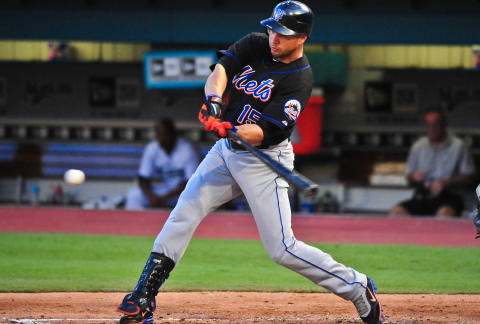
Best All-Time Center Fielders #8: Carlos Beltran
“Major League Baseball should retire Roberto Clemente’s number, just like they did Jackie Robinson’s.”—Carlos Beltran
It might be surprising to see Carlos Beltran ranked this high, but the advanced numbers really like him. He ranks eighth in Fangraphs WAR, seventh in Baseball-Reference WAR, and ninth in Jay Jaffe’s JAWS. If Beltran had played for just one or two teams during his career, rather than seven, perhaps he’d be looked at differently.
Beltran came up with the Kansas City Royals and was good early on. He won the AL Rookie of the Year Award in 1999 when he scored 112 runs, hit 22 dingers, had 108 RBI, and stole 27 bases. Injuries limited him to 98 games the following season, but he bounced back in 2001 to have another great all-around year.
As a young player, Beltran was a run-producer who could hit the long ball and steal bases while playing well in center field. From 1999 to 2008, he averaged 147 games played, 102 runs scored, 26 homers, 98 RBI and 27 steals, while hitting .281/.357/.497. His ability to fill the boxscore made him a 52.5-WAR player over that 10-year period.
As he aged into his 30s, Beltran struggled some years with injuries, but was productive when he was on the field. He was an all-star at least once with four different teams, including five all-star selections while he played for the New York Mets. He also won three Gold Glove Awards and two Silver Sluggers trophies.
Beltran continued to have success late into his career with the Cardinals and Yankees. He didn’t play well in his final season with the Astros in 2017, but was credited for his veteran leadership in helping the Astros win the first World Series in franchise history. Hopefully, he gets more support on the Hall of Fame ballot than Kenny Lofton did.
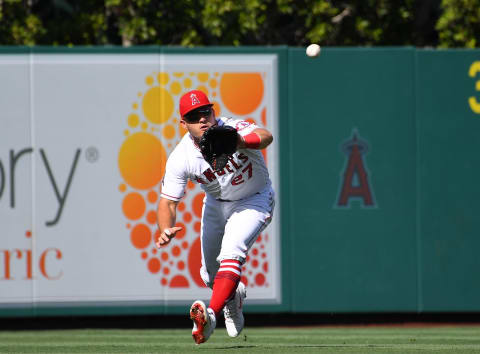
Best All-Time Center Fielders #7: Mike Trout
“As a kid, I had this ultimate goal to be a teacher. I wanted to be a history teacher like my dad.”—Mike Trout
Mike Trout is in the middle of his seventh full season and I believe he already ranks seventh all-time among center fielders in MLB history. He’s been THAT good. He doesn’t rank as high as seventh in Fangraphs WAR (12th) or Baseball-Reference WAR (14th), but Jay Jaffe’s JAWS has him seventh among the top 20 center fielders listed here. He also ranks seventh in Wins Above Average and has the best wRC+ of any center fielder ever.
Other than a 40-game sample in 2011, Trout has been an all-star all every year. He won the AL Rookie of the Year Award in 2012 and the AL MVP Award in 2014 and 2016. He could have won five straight MVP Awards if he wasn’t docked for playing on a team that has only made the postseason once in his career.
If Trout continues to play at the level he’s playing this year, he’ll have his third season with 10 or more WAR. Here are some players he’s likely to pass on the career WAR list before this year is over: Mark McGwire, Shoeless Joe Jackson, Lou Boudreau, Billy Williams, Dave Winfield, Willie McCovey, and Andre Dawson. Remember, Trout is only in his seventh full year. Those guys all accumulated that much value in careers at least twice as long. That’s why Trout is The God of WAR.
Everyone knows how good Alex Rodriguez and Ken Griffey, Jr. were as young players. They are both top-10 all-time on the Fangraphs WAR leaderboard for players 26 and under. Mike Trout is in his age-26 season. He’s second all-time, behind only Ty Cobb. That’s not just among center fielders, that’s among all players. And Trout is only one win behind Cobb so he could move to the top of the list before September.
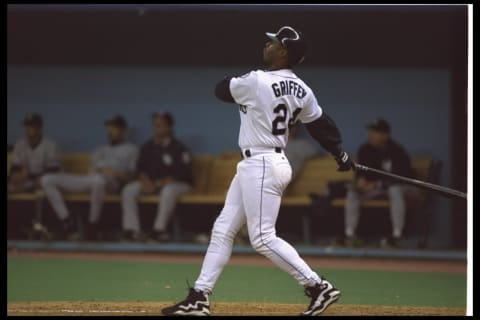
Best All-Time Center Fielders #6: Ken Griffey, Jr.
“As long as I have fun playing, the stats will take care of themselves.”—Ken Griffey, Jr.
In the history of baseball, only 15 players were more valuable than Ken Griffey, Jr. through the age of 30. “The Kid” was the number one overall pick by the Seattle Mariners in the 1987 MLB June Amateur Draft and was playing in the Kingdome two years later. He had a good rookie year, but finished third behind pitchers Gregg Olson and Tom Gordon in AL Rookie of the Year voting.
In his second year, Griffey began a streak of 11 straight all-star selections and won the first of 10 straight Gold Glove Awards. In these early years, Griffey regularly hit over .300 with good on-base and slugging percentages and was impressive in the field, but he wasn’t the big home run hitter he would become.
The home run swing took hold in 1993, when Griffey hit 45 and led the AL in total bases. In the strike-shortened 1994 season, he led the AL with 40 big flies and finished second in AL MVP voting to Frank Thomas. Those 40 home runs came in just 111 games. If he had finished out the year on that same pace, he would have hit 58.
Griffey looked to have taken his game to another level, but an injury-shortened 1995 season delayed his ascension to peak Griffey. Of course, he returned from that 1995 injury in mid-August to help the Mariners come from 12.5 games back to catch the California Angels for the AL West title. In the first postseason in franchise history, Griffey had 16 hits in 11 games. Five of those 16 hits were home runs.
The best two seasons of Griffey career came in 1996 and 1997, when he hit a combined 105 home runs and averaged more than nine wins above replacement per season. In the 1997 season, he led the AL in runs, homers, RBI, slugging percentage and total bases and finally won the AL MVP Award.
He led the league in home runs the next two seasons also, hitting 56 and 48 in his last two seasons with the Mariners. After a trade to Cincinnati, which he requested, Griffey hit 40 in his first year the Queen City. This would be his best year with the Reds and the last great year of his career. After being worth 76.2 WAR (Baseball-Reference) through the age of 30, he was worth just 7.6 WAR from age 31 on.
Young Griffey was one of the greatest players the game has ever seen. Middle-aged and old Griffey became a one-dimensional home run hitter who struggled defensively and was limited most years by injuries. His rightful place is in the top six among the best center fielders of all-time, but it wouldn’t be surprising to see Mike Trout move past him at some point.
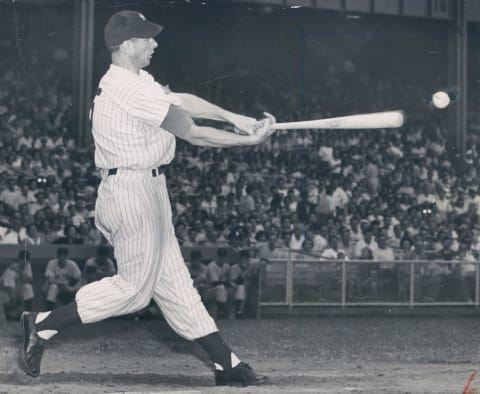
Best All-Time Center Fielders #5: Joe DiMaggio
“There is always some kid who may be seeing me for the first time. I owe him my best.”—Joe DiMaggio
This all-time list of the top 20 center fielders in MLB history has a couple guys on the same tier at the very top, followed by two more on the next tier and two more on the third tier down. Joe DiMaggio is with Ken Griffey, Jr. on that third tier. They were both worth roughly 80 WAR in their careers and rank fifth and sixth in peak value, based on Jay Jaffe’s JAWS.
One of the big differences between DiMaggio and Griffey is that Joltin’ Joe missed three prime years of his career because of World War II. He also retired after his age-36 season, when he was still an above-average player. He likely could have been productive for a couple more seasons. As it was, DiMaggio was an incredible player who had a terrific career.
Considering how well he hit with the San Francisco Seals in the Pacific Coast League, it’s clear that DiMaggio should have been in the major leagues at least a year or two or three before he made his debut in 1936. With the Seals from 1933 to 1935, he hit .340, .341, and .398. Even the talent-laden Yankees should have been able to find a spot for that guy.
There was no Rookie of the Year Award when DiMaggio took the field for the first time with the Yankees in 1936. Had there been, he would have won it. He hit .323/.352/.576 and led the league with 15 triples. He also made the all-star team, which he would go on to do in all 13 seasons he played in the major leagues.
When DiMaggio joined the Yankees, Babe Ruth was long gone but Lou Gehrig remained and was still one of the best players in baseball. He won the AL MVP Award in DiMaggio’s rookie year. He continued to play well for two more seasons, but hung up his spikes during the 1939 season because his body was feeling the effects of ALS.
With Gehrig sidelined, DiMaggio became the face of the franchise in 1939 and he immediately led the league with a .381 batting average and won the AL MVP Award. He would win it again two years later. These two first place finishes in MVP voting came during a stretch of eight seasons in which DiMaggio finished in the top eight every year. In his 1941 MVP season, DiMaggio famously hit in 56 straight games, a record that still stands.
The Yankees were wildly successful at this time and would remain so throughout DiMaggio’s career. They made it to the World Series 10 times in the 13 years he played in the big leagues, winning nine of them. Also, his service in World War II cost him a chance to play on the 1943 World Series-winning team.
After missing those three prime years to military service, DiMaggio resumed his all-star play in 1946. He was the AL MVP for the third time in his career in 1947 and finished second in MVP voting in 1948, despite leading the league in home runs and RBI. That was the year Lou Boudreau won the award after leding Cleveland to the AL pennant and their last World Series title.
In 1949, DiMaggio’s right heel kept him sidelined at the start of the season. He had experienced trouble with the heel for quite some time, but always played through it. In 1949, he was no longer able to do that. An “icepack stabbing his foot” is how he described the pain.
After missing the first few months of the season, DiMaggio came back just in time for a series against the hated Red Sox in Fenway Park. He dominated the series, then continued to play well over the rest of the season, finishing with a .346/.459/.596 batting line in 76 games. The Yankees won the pennant and the ensuing World Series.
As well as he played through the heel injury in 1949, DiMaggio couldn’t overcome it in the long run. He played two more solid seasons before retiring after the 1951 season. Three years later, he would marry perhaps the only person in the country as famous as he was, Marilyn Monroe. The following year, he would be elected to the Baseball Hall of Fame.

Best All-Time Center Fielders #4: Mickey Mantle
“Someone once asked me if I ever went up to the plate trying to hit a home run. I said, ‘Sure, every time’.”—Mickey Mantle
Mickey Mantle was discovered playing semipro ball as a 16-year-old in Oklahoma when a New York Yankees scout came to check out one of Mantle’s teammates. They agreed to a handshake deal that would make Mantle a Yankees farmhand when he graduated from high school. After he graduated, he played two seasons and part of a third in the minor leagues, then made his major league debut with the Yankees as a 19-year-old in 1951.
After holding his own as a rookie his first season, Mantle became the all-star fans knew and loved in his second season. He would be an all-star in 16 of his 18 seasons. He would also win three AL MVP Awards and finish second three times. He was the Mike Trout of the 1950s and 1960s.
Mantle seems larger than life in our memories, but he wasn’t a big man by today’s standards. He’s listed at 5-foot-11, 195 pounds, which is three inches shorter and 40 pounds lighter than Trout. He was well-built, though, and looked like he could have been a running back or middle linebacker if football had been his chosen game.
At his best, Mantle put up video game numbers. In 1956, he hit .353/.464/.705, scored 132 runs, hit 52 bombs, and drove in 130 runs. He followed that up with a .365/.512/.665 season in which he led the league with 121 runs and 146 walks. Those were his back-to-back MVP seasons.
For the 11-year-stretch from 1952 to 1962, the Yankees star centerfielder averaged just over 8 WAR per season. That’s MVP caliber play for more than a decade. His performance played a big part in the Yankees’ sustained success at this time. They appeared in 12 World Series during his 18-year career, winning seven of them.
In the end, the thing that slowed Mickey Mantle down was his own body. He struggled with hip and leg injuries during the last part of his career. His last superstar season was in 1961, when he battled with teammate Roger Maris as they chased Babe Ruth’s single-season home run record. Maris broke the Babe’s mark by hitting 61 homers, while Mantle finished with 54.
That was the last time he would hit more than 40 home runs in a season. He had a couple years in which he hit 30 or more, but averaged just 23 home runs per year and 121 games played over his last seven seasons. He retired following the 1968 season and was inducted into the Baseball Hall of Fame in 1974.
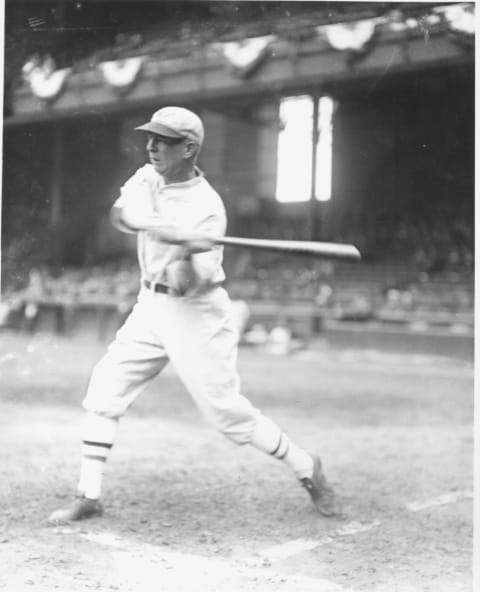
Best All-Time Center Fielders #3: Tris Speaker
“You can write him down as one of the two models of ball-playing race. The other was Napoleon Lajoie. Neither ever wasted a motion or gave you any sign of extra effort. … They had the same elements that made a Bobby Jones or the Four Horsemen of Notre Dame—the smoothness of a summer wind.”—Grantland Rice, about Tris Speaker.
More than 100 years ago, a young Tris Speaker wrote to a number of pro teams asking for a contract. The Cleburne Railroaders signed him and he began his career in the Class D Texas League. The next season, he moved up to Class C and played for the Houston Buffaloes.
Those were the days described it the movie “Field of Dreams” when Ray and Terrance Mann pick up young hitchhiker Archie Graham. The kid talks about all the unaffiliated minor league teams around the country at the time. He was just looking for a place to play, like Tris Speaker.
At the end of his season with the Buffaloes, Speaker’s contract was purchased by the Boston Red Sox and he played in seven major league games as a 19-year-old. They weren’t impressed with his .158 batting average. He ended up back in the minors in 1908 when he played with the Class-A Little Rock Travelers, but later got the call to the Red Sox. He struggled again, hitting .224 with little power or on-base ability.
Those first two partial seasons would be the last time for a long time that Speaker struggled to hit in the big leagues. In 1909, he began a string of 10 straight seasons with a .300 or better batting average. He also regularly had an on-base percentage over .400 and slugged over .500. In 1916, he led the league in all three rate stats with a .386/.470/.502 batting line.
Speaker played the first half of his career during a time when home runs were rare. He only hit 117 in his career, but supplemented the long ball with 792 doubles, the most in MLB history. He also finished with a .345/.428/.500 career batting line and more than 3500 career hits.
On the career leaderboard, Speaker ranks third all-time in Fangraphs WAR, Baseball-Reference WAR, Wins Above Average, and the Jay Jaffe JAWS metric. When the Baseball Hall of Fame opened in 1936, Speaker finished seventh in the voting, behind Napoleon Lajoie and the original five Hall of Famers—Ty Cobb, Honus Wagner, Babe Ruth, Christy Mathewson and Walter Johnson. Speaker, Lajoie and Cy Young were inducted the following season.
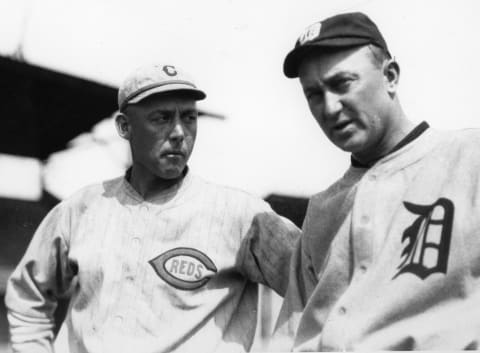
Best All-Time Center Fielders #2: Ty Cobb
“The way those clubs shift against Ted Williams, I can’t understand how he can be so stupid not to accept the challenge to him and hit to left field.”—Ty Cobb
Considering how Ty Cobb felt about the Williams Shift back then, imagine how he’d feel about the extensive use of the shift today. He would probably go out of his mind watching hitters vastly inferior to Williams not take advantage of the easy hits available against the shift. Too bad Cobb doesn’t tweet from the after life, like Old Hoss Radbourn.
The two biggest stars in baseball in the early part of the 20th century were Ty Cobb and Babe Ruth. They dominated the sport, like an Bill Russell and Wilt Chamberlain dominated the NBA in their day. In the ensuing 80-plus years, Ruth’s stature has remained as one of the behemoths of baseball. Cobb is still regarded as one of the all-time greats, but he’s not spoken of in the same way Ruth is.
With that in mind, it’s interesting to note that Ty Cobb received the most votes among the five players who made up the inaugural class of the Baseball Hall of Fame. Cobb Received 222 of the 226 votes cast, which was seven more votes than Ruth and Honus Wagner received. Christy Mathewson (205 votes) and Walter Johnson (189 votes) filled out the five-man class.
In those early days, batting average was everything and no one hit for average like Cobb. He played his first season with the Detroit Tigers as an 18-year-old in 1905, hitting .240 in 41 games. He would never again hit below .300, not even in his final season when he was 41 years old.
In the 13-year-stretch from 1907 to 1919, Cobb averaged .377/.441/.527 while scoring 104 runs and stealing 57 bases per year. He led the league in batting average every year but one during this period. The year he didn’t lead the league in hitting, he hit .371 and finished second behind Tris Speaker’s .386.
Cobb wasn’t just posting empty batting averages, though. He also led the league in on-base percentage seven times in his career and slugging percentage eight times. He had four seasons in which he led the league in all three rate stat categories. He didn’t hit many home runs, but often finished with double-digit triples and 30 or more doubles. Six times he led the AL in stolen bases, topping out with a then-record 96 steals in 1915.
In the “little known facts” category, Cobb also pitched five innings in the major leagues. Most baseball fans know that Babe Ruth was a pitcher before becoming an outfielder full-time but I would guess very few know that Cobb pitched a few times. In his five innings of work across three appearances, Cobb allowed two earned runs for an ERA of 3.60.
Cobb was a driven and talented man who played with an incredible passion. He banged out hits like a machine. Once he got on, he was always a threat to steal or to aggressively take an extra base on any hit ball. His style of play has been well-documented over the years, as has his personality.
When I wrote about Cobb last year, I referenced a couple books from 2015 that had somewhat contrasting views about the person Ty Cobb truly was. I learned that many of the stories baseball fans have heard that portray Cobb in a very negative light are either exaggerated or outright false.
He wasn’t a saint, of course, but he also wasn’t as bad as he’s been portrayed. Now there’s a new book out about Cobb that takes a very deep dive into source material at the time, including extensive use of contemporary newspaper accounts, to examine the life of Cobb.
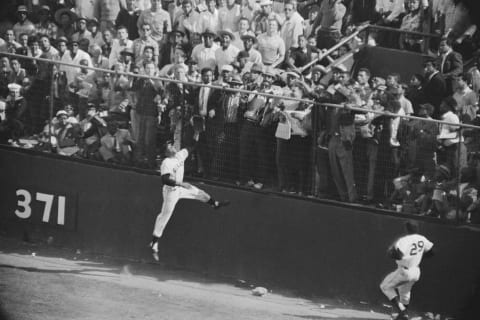
Best All-Time Center Fielders #1: Willie Mays
“They throw the ball, I hit it. They hit the ball, I catch it.”—Willie Mays
Willie Mays is in the conversation when there’s talk about the greatest players to ever play the game. He didn’t have the home runs of Babe Ruth or for the batting average of Ty Cobb or the on-base percentage of Ted Williams, but he excelled at all three hitting categories and was a better fielder than the aforementioned trio. For that reason, he is often mentioned as the greatest all-around player to play the game.
When he was just 16 years old, Mays played for the Birmingham Black Barons of the Negro American League. This was the same year Jackie Robinson broke the modern color barrier in the major leagues, which gave Mays hope that he could get to the big leagues in the future. That hope came to fruition when he was signed by the New York Giants. In 1951, at the age of 20, he was the NL Rookie of the Year.
Two months into the 1952 season, Mays was drafted into the Army. He missed the rest of that season and all of the 1953 season, but came back with a vengeance in 1954. That year, he began a string of 19 straight seasons with all-star selections. He was the NL MVP twice and finished in the top 10 ten other times. He also won 12 Gold Glove Awards.
He could do it all on the diamond. If you needed to scratch out a run, Mays could get a hit, steal second, and score on a single. He led the league in stolen bases four times. If you needed the long ball, Mays could provide one. He led the league in homers three times and is fifth on the all-time list.
One of the iconic moments of Mays’ career is simply known as “The Catch.” On a ball hit by Vic Wertz in Game 1 of the 1954 World Series, Mays sprinted to deep center field at the Polo Grounds and made an incredible over-the-shoulder catch. Some say it was the greatest catch they ever saw. Mays said he had better catches that weren’t as famous because they didn’t happen to be televised.
Statistically, Mays tops all center fielders in both versions of WAR, Jay Jaffe’s JAWS and Wins Above Average. He’s behind Ty Cobb and Mickey Mantle in offensive value, but better than both on defense. In fact, the only center fielder on this top 20 list who had more defensive value is Andruw Jones.
More from Call to the Pen
- Philadelphia Phillies, ready for a stretch run, bomb St. Louis Cardinals
- Philadelphia Phillies: The 4 players on the franchise’s Mount Rushmore
- Boston Red Sox fans should be upset over Mookie Betts’ comment
- Analyzing the Boston Red Sox trade for Dave Henderson and Spike Owen
- 2023 MLB postseason likely to have a strange look without Yankees, Red Sox, Cardinals
Beyond the statistics was how Mays enthralled the people who got to see him play. Giants president Peter Magowan summed him up when he said, “He would routinely do things you never saw anyone else do. He’d score from first on a single. He’d take two bases on a pop-up. He’d throw somebody out at the plate on one bounce.”
His manager, Leo Durocher once said, “If he could cook, I’d marry him.”
Ted Williams added, “They invented the All-Star game for Willie Mays.”
Somehow, when Mays was up for election to the Baseball Hall of Fame in 1979, he earned just 94.7 percent of the vote. That meant 23 writers chose not to vote for him. Inconceivable! Joe Posnanski examined the BBWAA’s reluctance to vote any player into the Hall of Fame unanimously in this article, but it’s still mind-boggling that someone could not vote for Mays.
dark. Next. All-Time NL All-Star Team
That’s our list of the best all-time center fielders. Who is too high? Who is too low? Comment below!